What keeps customers coming back and turning one-time buyers into lifelong supporters? That’s where loyalty programs come in – bridging the gap between customer satisfaction and long-term success. But why are loyalty programs important?
From boosting engagement to driving repeat purchases, these programs are more than just perks—they’re game-changers for modern businesses.
Let’s explore the benefits of loyalty programs and show why loyalty programs are more important than ever and can help your brand address all these challenges.
A Loyalty Programme: An Overview
A loyalty program is a powerful marketing tool that helps businesses keep customers coming back and build lasting relationships. It rewards customers for their continued choosing work with your business, usually with points, discounts, exclusive deals, or VIP perks. This strengthens emotional connections, encourages repeat purchases, and creates a loyal customer base.
Studies show that 52% of customers prefer to shop with brands they trust, and 65% of their purchases are from loyal customers. This highlights how effective loyalty programs can be in boosting a business’s marketing strategy.
Benefits of Loyalty Programs for Businesses
Loyalty programs have proven to be a game-changer in driving sustainable business growth. So, what are the detailed advantages of applying loyalty programs to their businesses? Let’s break it down!
Driving Business Growth
Increased Repeat Purchases and Customer Retention
Loyalty programs are designed to encourage customers to return and make repeat purchases, thereby creating a win-win for both businesses and patrons. Loyalty programs offer enticing rewards like points, discounts, exclusive access, and personalized offers, making customers choose your brand over competitors.
Statistics show that loyalty program members generate 12-18% more revenue growth per year than non-members, and 84% of consumers say they’re more likely to stick with a brand that offers a loyalty program, demonstrating the power of these programs in reducing customer churn and building lasting relationships.

A real-world example is Starbucks, whose loyalty program, Starbucks Rewards, has been highly successful in encouraging repeat visits. According to the company, program members visit Starbucks about two to three times weekly, compared to non-members who visit less frequently.
Additionally, Starbucks Rewards members account for over 40% of the brand’s total sales. This shows how loyalty programs foster repeat business and strengthen customer retention, helping companies build a stable and profitable customer base.
Increased Customer Lifetime Value (CLV)
Another significant advantage loyalty program is increased customer lifetime value (CLV). Loyalty customers tend to spend more over time, which directly boosts their lifetime value to a business. Studies show that increasing customer retention by just 5% can lead to a 25-95% increase in CLV. A report from Bain & Company found that loyal customers are worth up to 10 times as much as their first purchase throughout their relationship with a brand.
For example, Amazon Prime illustrates how loyalty programs enhance CLTV. By offering free shipping, exclusive deals, and access to premium content, APrime delivers consistent value. Consequently, Prime members spend $1,400 annually, compared to $600 for non-members. This strategy effectively transforms casual shoppers into high-value, lifelong customers.
Valuable Customer Data Collection
Loyalty programs are more than retention tools; they are treasure troves of customer data. By signing up, making purchases, or redeeming rewards, customers provide valuable insights, including demographic details and purchasing habits. This information helps businesses craft smarter marketing strategies and deliver better customer experiences.
Enhancing Customer Engagement and Experience
Encouraging Referrals
For instance, Dropbox perfected referrals, achieving a 60% rise in sign-ups and a staggering 3900% increase in daily sign-ups through its program. By rewarding referrals, loyalty programs turn loyal customers into active brand ambassadors.
Referral programs are a powerful tool for customer acquisition. By encouraging loyal customers to recommend your brand, they deliver a trifecta of benefits: more customers, lower marketing costs, and a stronger brand reputation. In fact, a Nielsen study shows that 92% of customers trust referrals from friends and family, making this one of the most effective ways to grow your customer base.
For example, Dropbox successfully used referrals to boost its sign-ups. The company saw a 60% increase in sign-ups and an impressive 3,900% rise in daily sign-ups through its referral program.
Best Practices for Referral Programs
- Offer Dual Rewards: Reward both the referrer and the referee to ensure mutual benefits and higher participation rates.
- Simplify the Process: Make it easy for customers to refer their friends via links, QR codes, or social media sharing options.
- Personalized Messaging: Use tailored communication to invite referrals, increasing the likelihood of engagement.
- Leverage Social Media: Allow customers to share referral links directly on their social media platforms, expanding your reach organically.
Another solution for encouraging referrals is to choose the Shopify Joy Rewards & Loyalty Program. The Shopify Joy Rewards & Loyalty program includes a referral feature as part of its strategy to boost customer engagement and retention. Here’s how it works:
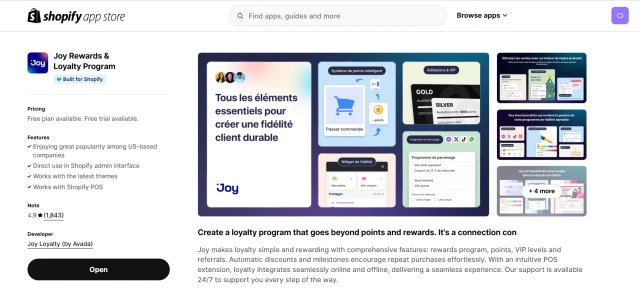
- Referral Program: Customers can refer new shoppers who make a purchase. This helps grow the customer base through word-of-mouth marketing, while rewarding loyal customers for their efforts.
- Loyalty Wallet Access: The referral feature is available through the loyalty program wallet. This wallet acts as a central hub where customers can manage rewards and view membership benefits, making it easy for them to participate in the referral program.
- Reward System: The program uses a point-based system to encourage repeat purchases and engagement. While the exact rewards for referrals aren’t specified, referring new customers likely earns points that can be redeemed for various rewards.
Differentiation from Competitors
Loyalty programs are a powerful tool for differentiation, allowing businesses to stand out in a crowded marketplace. By offering unique rewards, exclusive experiences, and personalized offers, the benefits of customer loyalty programs are shined. These programs give customers a compelling reason to choose your brand over competitors. This could include early access to new products, VIP events, or partnerships with other businesses to provide exclusive benefits.
The Hilton Honors program is a perfect example of how loyalty programs can help a brand stand out. With over 100 million members worldwide, it’s been a key player in boosting Hilton’s revenue per available room (RevPAR).
What makes Hilton Honors unique is its integration with the Hilton mobile app, which offers features like mobile check-ins, room selection, and exclusive rewards. Members also enjoy perks such as free nights and special experiences, making Hilton a top choice in the hospitality industry.

Driving Engagement and Customer Experience
Loyalty programs are more than just a way to reward customers—they’re a powerful way to turn them into brand advocates. By offering rewards and incentives, these programs encourage customers to interact with the brand more frequently. As a result, customers feel more connected and valued, which leads to greater satisfaction and loyalty.
For example, loyalty programs often provide personalized offers based on purchase history, making the experience feel more relevant and tailored to individual preferences. This level of engagement not only strengthens customer relationships but also increases the likelihood of repeat purchases.
A great example of a loyalty program that drives engagement and brand advocacy is Sephora’s Beauty Insider program. It has built a loyal customer base by offering personalized rewards, exclusive access to new products, and even birthday gifts for members. Sephora goes further by encouraging customers to share their beauty routines and product reviews on social media, creating a strong sense of community around the brand.
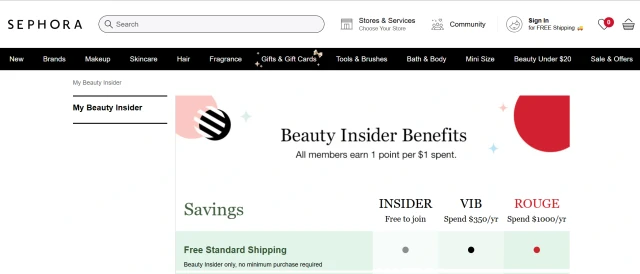
Types of Loyalty Programs
Loyalty programs come in various forms, each designed to boost customer engagement and retention.
| Program Type | Description | Advantages | Disadvantages |
|---|---|---|---|
| Points-Based | Earn points through purchase, redeemable for rewards. | Simple, easy to track, and scalable | Impersonal rewards, fatigue |
| Tiered Loyalty | Multiple levels, exclusive tier rewards. | Spending motivation, achievement | Complexity, tier alienation |
| Referral | Customer referrals, referral rewards. | Low-cost acquisition, advocacy. | Dependency on referrals |
| Cash-Back | Cash or credit rewards. | Cost-conscious appeal | Lower perceived value |
| Coalition | Partner network to offer joint rewards. | Broadened rewards, partnerships | Partnership complexity |
| Subscription-Based | Pay a recurring fee for exclusive benefits or discounts. | Predictable revenue, retention | High upfront cost |
| Charity/Donation | Donate their loyalty points to a charity or cause. | Feel-good appeal | Limited value for all |
| Gamified | Participate in games or challenges to earn rewards. | Engagement, continuous activity | Complexity for some users |
| Email/Communication-Based | Sign up for emails or engage with marketing content. | Cost-effective, personalization | Limited in scope |
Key Elements of a Successful Loyalty Program
A well-designed loyalty program isn’t just about giving rewards; it’s about creating a long-lasting relationship with your customers. To make sure your loyalty program stands out, it needs to have certain key elements that drive customer retention, engagement, and, ultimately, your business growth.
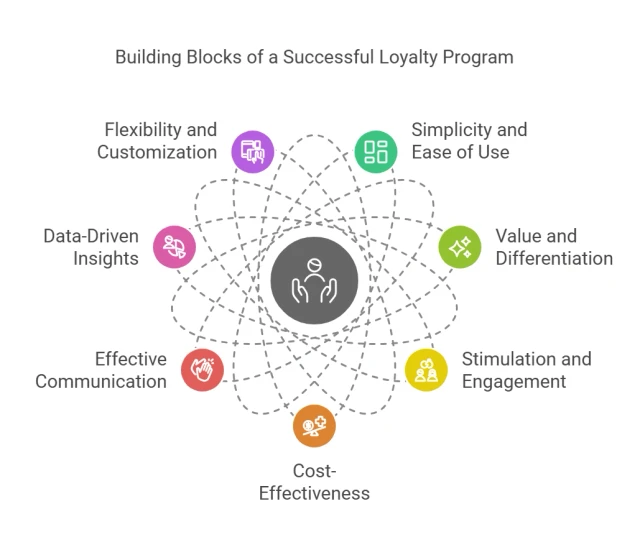
- Simplicity and Ease of Use: A successful loyalty program should be easy to join and use. Customers should quickly understand how to earn and redeem rewards without complicated steps or terms.
- Value and Differentiation: The program should provide rewards or benefits that make them feel appreciated. It should also stand out from competitors by offering unique perks that customers can’t easily get elsewhere.
- Stimulation and Engagement: The program should encourage customers to engage frequently. This can be achieved by offering ongoing rewards for repeat purchases, social media interactions, or referrals.
- Cost-Effectiveness: A good loyalty program should provide a strong return on investment for the business. It should be scalable and sustainable, ensuring that the cost of rewards is balanced with increased customer retention and sales.
- Effective Communication: Customers should be regularly informed about their points, rewards, and any special offers, both online and offline, through emails, apps, or in-store notifications.
- Data-Driven Insights: Successful programs leverage customer data to personalize offers and experiences. By analyzing purchase history, preferences, and behaviors, businesses can create targeted rewards that drive loyalty.
- Flexibility and Customization: A great loyalty program should allow for flexibility. Customers appreciate the ability to choose how they want to earn and redeem rewards, making the program more relevant to individual preferences.
If you’re looking for a loyalty solution that checks all of these boxes, Avada’s Shopify Joy Loyalty app is the perfect choice. Whether it’s simplifying the user experience, offering unique rewards, or providing powerful insights, this app can help you create a highly engaging, cost-effective, and data-driven loyalty program for your business.
Start building your successful loyalty program today with the Shopify Joy Loyalty app: https://joy.so/.
Addressing Customer Pain Points When Building a Loyalty Program
Creating a successful loyalty program requires understanding and addressing common pain points that customers often experience. By solving these issues, you can improve customer satisfaction and ensure your loyalty program drives long-term engagement.
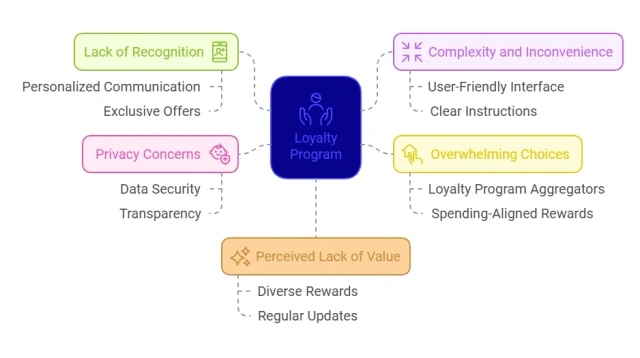
- Lack of Recognition: Personalize communication, like tailored emails or exclusive offers. Simple gestures, like birthday gifts or early access to new products, make customers feel valued and enhance loyalty.
- Complexity and Inconvenience: Keep the program simple and user-friendly. Clear instructions on earning and redeeming rewards, combined with an easy interface and good customer support, boost engagement and retention.
- Overwhelming Choices: Use loyalty program aggregators to help customers track multiple programs. Alternatively, focus on rewards that align with their main spending habits—such as cashback on groceries.
- Privacy Concerns: Build trust by ensuring data security and being transparent about how customer data is used. Give customers control with opt-in options for marketing.
- Perceived Lack of Value: Offer diverse rewards that cater to different preferences. Regularly update the program to keep it attractive—refreshing rewards that no longer motivate customers.
Bottom Line
So, here are the benefits of loyalty programs. They’re crucial for retaining customers, increasing repeat purchases, and creating brand advocates. Whether through exclusive rewards or personalized experiences, a loyalty program can transform customer relationships and drive long-term growth.
Benefit of Customer Loyalty Program: FAQs
How do loyalty programs benefit companies?
Loyalty programs are essential because they help businesses retain customers, boost repeat purchases, and increase lifetime value (CLV). By rewarding customers for their repeat business, companies strengthen customer relationships, improve brand loyalty, and create a steady revenue stream.
What is the objective of loyalty programs?
Loyalty programs’ main objective is to increase customer retention. By offering rewards, exclusive perks, or personalized experiences, businesses encourage customers to return and make more frequent purchases. Ultimately, these programs aim to enhance customer lifetime value and create brand advocates who help attract new customers.
What benefits does a loyalty program bring to a company?
Loyalty programs bring several benefits to companies, including:
- Increased customer retention and repeat purchases.
- Higher customer lifetime value (CLV).
- Improved customer insights through valuable data collection.
- Cost-effective marketing, as loyal customers are more likely to recommend your brand.
Differentiate from competitors by offering exclusive perks or experiences.
What is the value of a loyalty program?
The value of a loyalty program lies in its ability to create lasting customer relationships. It turns occasional buyers into repeat customers, reducing the cost of acquiring new ones. Additionally, it helps brands gather insights that can lead to better-targeted marketing and product offerings, ultimately increasing customer satisfaction and profitability.
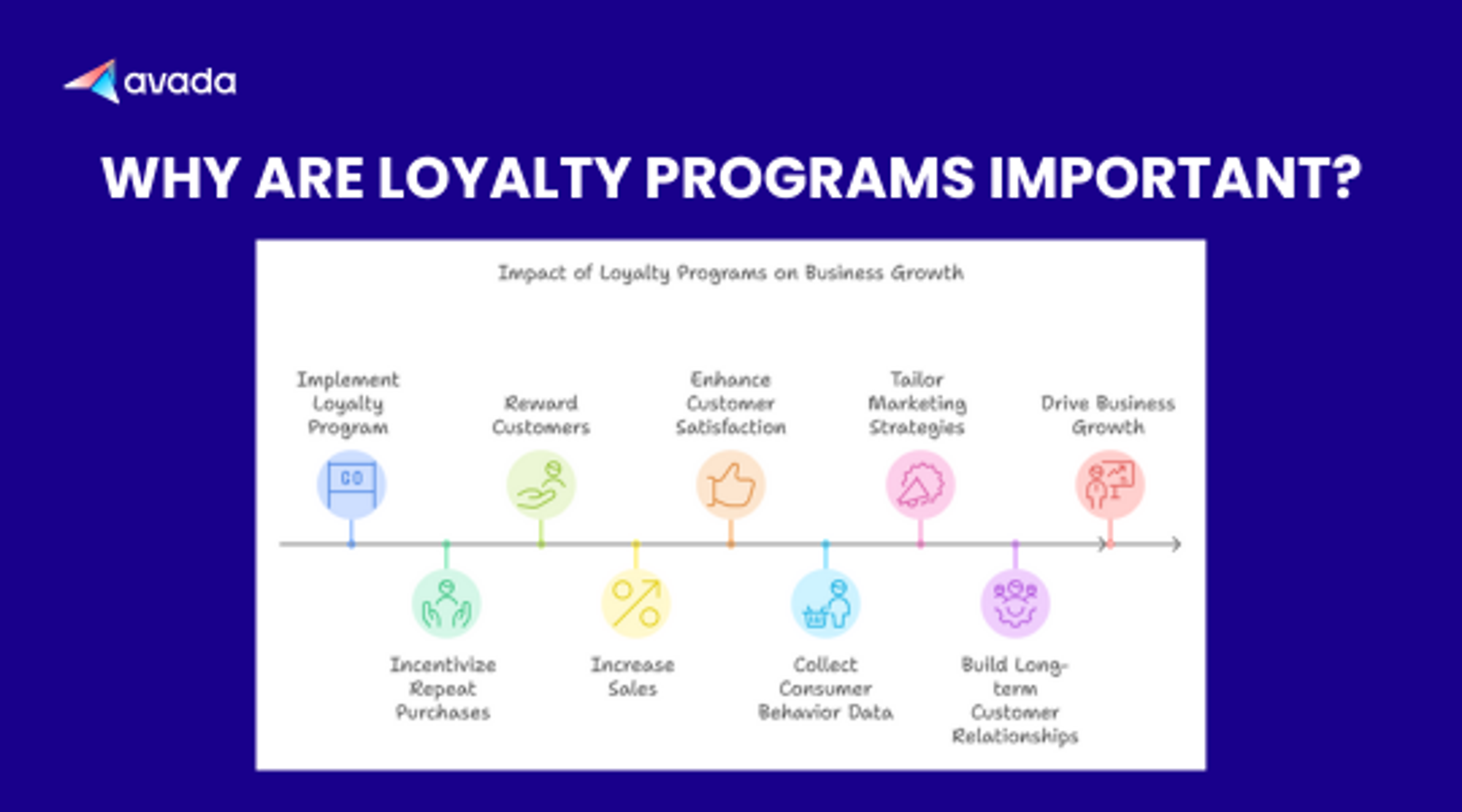



-a7e9a3.png?width=828&q=75&f=webp&auto=format)